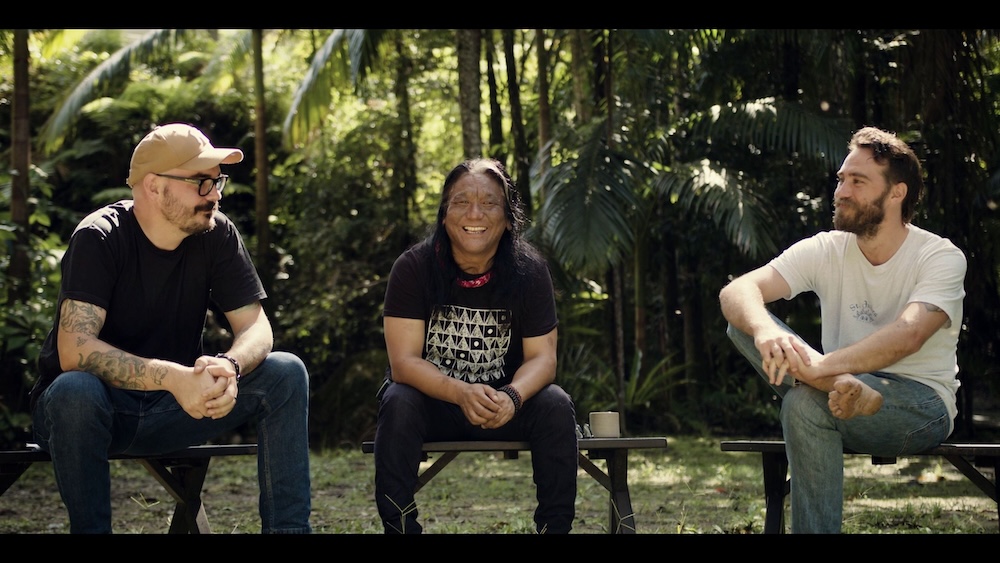
Australian singer-songwriter Matt Corby has collaborated with Tibetan artist Tenzin Choegyal and musician Rohin Jones (The Middle East) to record an album, Snowflower, exploring the healing power of music. The album is recorded in 432 Hz, a therapeutic frequency that aims to reduce anxiety and lower heart rates. The soundscape has spiritual and ritualistic elements, providing a beautiful meditative journey. The album’s theme reflects the cycle of a day, from dawn to dusk, symbolizing the impermanence of human life. John Goodridge from The AU Review spoke to Matt and Tenzin about the making of the album.
How did you both meet and start to work together?
Matt Corby: Tenzin has always been this staple at Woodford Folk and is this sort of mystery man, a mystic character in the music scene in Brisbane. We ended up playing a couple of show nights with different artists and we became friends. Al (Alex Henriksson), who was our mutual friend, decided to start this record label RVR and it was actually the first project we wanted to do. We’re like, we’ve got to make a Tenzin album. That would be just the greatest way to kick off this record label. And it would also make everyone scratch their heads and be like, I thought you were going to do pop music. So that that was what kicked off the collaborative relationship. But we had known of each other for a long time, and Al and Tenzin had a great relationship prior to that. So, it’s happened pretty organically, really.
The music itself is so beautiful and meditative. I’m a great believer in music as having a healing energy. Is that what this album’s about?
Tenzin Choegyal: Yeah, it’s the power of music. The one thing that I really enjoy when making music is also playing to the beings that you can’t see. It’s not only about performing to the physical people who are present at your presence, I think the power of music is beyond the visible world that we are in. The power of the beings that we can’t see, they’re always there.
Is this a way of connecting us to the infinite?
Tenzin: We all have our own individual visions of the world that we have created, but also the world that we cross paths. The music itself, I think it’s beyond verbal context. When I listen to Matt sing, it’s like it takes me to different places that that probably Matt wouldn’t even know. So, I think the power of music is very visualised imagination.
Matt: Yeah, I’d second that with Tenzin. There are some musicians, singers in particular, maybe because the instrument is internal, it’s this extension of themselves. Some singers have this capacity to hit you in this spot right here. There are all different ways of enjoying music. Sometimes you’re intellectually like, that’s tricky, or that’s tight, or whatever. Then there’s some things that you hear that you just go, oh, it just gets you right in this weird part of your chest. I think that that’s the thing that’s beyond words, that spiritual connection that that music bridges the gap to.
I feel like Tenzin has been born with that and is constantly on this journey of finding ways to bridge that gap with his music. It was why I wanted to, in any way, shape or form, be a part of this, recording these moments and trying to make this record. There are so many levels, and Tenzin would probably have his own universe of ideas and concepts that go beyond my understanding. We’re white fellas.
True, it’s not part of our basic culture. We have consumerism and pop culture, whereas the background of Tibetan culture and the Dalai Lama is such a valuable thing that we don’t appreciate as much as we should.
Matt: We’re not taught that; it’s not a priority. We’re not taught philosophy or spiritualism or religion of all kinds in school and taught to think like that. So, music is really all we have when you think about it. Even that action is so unexplainable to people that haven’t gone down that road. It’s such a beautiful feeling. Sometimes it creates this euphoria or connection or whatever.
I was reading that 432Hz reduces anxiety and lowers the heart rate, which, listening to the album feels like such a beautiful, meditative journey.
Matt: That was a conscious decision. There’s lots of theories about 432Hz, and I’ve read a lot of opposition to it being that it doesn’t mean anything, blah, blah, but there’s been studies to suggest that it might. I’ve always been this firm believer in, you know, the human body absorbing frequencies and some obviously would be better for you than others.
Archaeologists found resonating chambers in in Egypt, in pyramids that they would use for healing, so they hypothesise. That was why we chose to do it in 432. I don’t want to be like, yes, this is a healing frequency, but there is evidence to suggest that it could be. Even when I said it to you, Tenzin, that we were doing it in 432, I remember you said that, oh, that’s a division of eight or something. And you had some theory as to why.
Tenzin: I think the motivation and the intent of 432 is to be in that space of healing. I really enjoyed that the motivation was already in that space when you are in the studio. So, I think the intent and the motivation is already there. Whatever you create from that intention would rise to some space of creative healing. I think it’s very valid. It’s up to people who receive them and who encounter them, and I hope that it will like whoever encounters our pieces. There are 7.2 billion human beings on this planet, and then, all these other beings that are not human beings. So, whoever encounters them, hopefully they will receive that intention as well.
I’ve been at some “Welcome to Country” ceremonies where you can almost feel the spirits of the past flowing through the energy. I think when we can tap into that, it’s so powerful, because we have all the power of the of the spirits, as well as our own physical power, which creates something bigger than both of us.
Tenzin: All music has its own rituals. Sometimes it’s meant for the wedding. Yes, sometimes it’s meant for the enjoyment of ceremonial things, so it has its own places. I think the way we approached this one, our intention was clear of being, and also, we were actually creating at the time when we needed the healing most, like it was during the time when all the human beings were scared of breathing with each other.
So, at that point of time, the healing was very much needed, probably that’s when Matt and me aligned. If we had created before that time, it might have been totally different, but that time and space also became part of the creation as well. Does that make sense?
Where did the title of the album Snowflower come from?
Tenzin: Oh, it was the final piece that we created. As we were finishing, I was about to drive off, and then, in the morning, I said I’ve got one more. The title actually kind of comes from a thought of snowflake being kind of like how each individual human beings are unique in themselves. Just like the snow flowers, the snowflake, when it falls down, each individual flake is unique in itself. It’s kind of honouring that individual being at the same time, how beautiful the meadows become when it’s blanketed by all the snow flowers. When the snow flower lands in your hand, with the warmth of your hand, the Snow Flower disappears in an instant. So, the fragility, and at the same time, the power of your own being as a unique individual. Yeah, so it’s kind of like the thought of the impermanence nature of everything.
What I didn’t realise about the album at first is that it’s like ‘a day in the life’. This the mountain, the dawn, the passage, dusk, lullaby, dreaming. It’s like a symbolism for human life in a way, one day expanding to a life.
Matt: There was a cup of tea and lunch as well.
Tenzin: I think I was the one who took out the cup of tea and the lunch, because we really liked the dusk and the dawn and the lullaby and all those concepts. But then, I actually like the cup of tea, but I thought having lunch in there was bit too much.
Matt: I loved lunch. Best song title ever.
Tenzin: I thought lunch, it didn’t really fit in as a title for me, but I think it was support from Alex and Matt to make it into a morning till night.
Matt: Yeah, and like, it’s songs that serve a function through certain periods of the day, and that can evoke and create different mental spaces for those times. Not that they should be used exactly for that. But the whole thing is this guided soundscape meditation to the day in the life of any particular person.
So, will you be touring the album at all?
Tenzin: I think, when Matt wants it to happen, I’m happy to perform it, but the performing part of it will always be different, right? Because all of the songs in the album are as you are hearing it now. When you come to the live performance of it, it will be totally different. It’s always evolving.
Because I see you play the Moog synthesiser, Matt.
Matt: Apart from piecing it together, production wise, tracking everything and moving things around, all I really did was set moods with the Moog. Tenzin was doing the orchestrating.
Tenzin: The one I really loved, was the one that we did spontaneously with flute one time.
Matt: That was so good. I would like to have, like, seven or eight singers. Just them, me and Tenzin and our friend Rohin, who was a big part of the record, Rohin Jones, who’s an incredible musician, and that be the show. Just me and Rowie, creating all the beds of music and doing the soundscape stuff, and singers probably scared out of their pants, waiting for Tenzin to do something to respond to. If we could pull that off, I think people would walk away being like, holy shit. That was beautiful. So, if we can do that, that’s what I’m looking for. I’m trying to piece together this, like an ultimate choir of badass singers that can learn the Tibetan and do the multiple harmonies and stuff.
Tenzin: I look forward to that.
Matt: I’ll get right on it.
![]()
Snowflower is a profoundly auditory experience providing a sanctuary of sound amidst the bustle of modern life. The album is a work of free-flowing innovation and rejuvenating enchantment, an album that is more than music; it is a meditative journey. Have a listen through your favourite streaming service here.
Header photo: Rohin Jones, Tenzin Choegyal and Matt Corby
